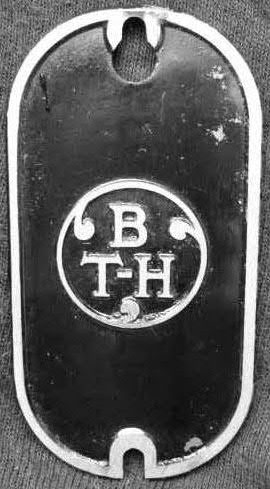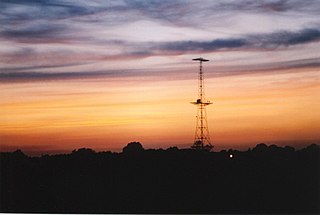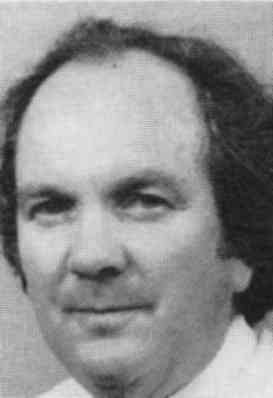Marconi Electronic Systems (MES), or GEC-Marconi as it was until 1998, was the defence arm of General Electric Company (GEC). It was demerged from GEC and bought by British Aerospace (BAe) on 30 November 1999 to form BAE Systems. GEC then renamed itself Marconi plc.
The General Electric Company (GEC) was a major British industrial conglomerate involved in consumer and defence electronics, communications, and engineering.
The Plessey Company plc was a British electronics, defence and telecommunications company. It originated in 1917, growing and diversifying into electronics. It expanded after World War II by acquisition of companies and formed overseas companies.

British Thomson-Houston (BTH) was a British engineering and heavy industrial company, based at Rugby, Warwickshire, England. Originally founded to sell products from the Thomson-Houston Electric Company, it soon became a manufacturer using licences from the American company. They were known primarily for their electrical systems and steam turbines.

Ferranti or Ferranti International PLC was a UK electrical engineering and equipment firm that operated for over a century from 1885 until it went bankrupt in 1993. The company was once a constituent of the FTSE 100 Index.
The Marconi Company was a British telecommunications and engineering company that did business under that name from 1963 to 1987. Its roots were in the Wireless Telegraph & Signal Company founded by Italian inventor Guglielmo Marconi in 1897, which underwent several changes in name after mergers and acquisitions. The company was a pioneer of wireless long distance communication and mass media broadcasting, eventually becoming one of the UK's most successful manufacturing companies. In 1999, its defence equipment manufacturing division, Marconi Electronic Systems, merged with British Aerospace (BAe) to form BAE Systems. In 2006, financial difficulties led to the collapse of the remaining company, with the bulk of the business acquired by the Swedish telecommunications company, Ericsson.
Tracor was a major North American defense electronics contractor which was acquired by Marconi Electronic Systems (MES), a subsidiary of General Electric Company plc, in 1998. Following the purchase of MES by British Aerospace in November 1999 to form BAE Systems, Tracor became BAE Systems Integrated Defense Solutions. Following a 2005 reorganisation, the company became BAE Systems Sensor Integration, part of Electronics and Integrated Solutions.
The GEC-Marconi scientist deaths conspiracy theory claims that between 1982 and 1990 a number of British-based GEC-Marconi scientists and engineers who worked on the Sting Ray torpedo project and United States Strategic Defense Initiative-related projects died under mysterious circumstances.

Marconi Research Centre is the former name of the current BAE Systems Applied Intelligence Laboratories facility at Great Baddow in Essex, United Kingdom. Under its earlier name, research at this site spanned military and civilian technology covering the full range of products offered by GEC-Marconi, including radio, radar, telecommunications, mechatronics and microelectronics.
Norman Robert Campbell (1880–1949) was an English physicist and philosopher of science.
Sir Robert James Clayton CBE was an English electronics engineer who was notable in the area of defence and industrial electronics. He worked for the GEC conglomerate for the whole of his career, becoming the company's technical director. Clayton is credited with playing a significant role in the post-war development of electronics in the United Kingdom.

Daryl Egbert Hooper was an electronic engineer notable for pioneering engineering at La Trobe University and heading up the GEC Research Hirst Centre in the 1980s. He is also notable for his textbook on amplifier design.
The Clifford Paterson Lecture is a prize lecture of the Royal Society now given biennially on an engineering topic. A £500 gift is given to the lecturer. The lectures, which honour Clifford Copland Paterson, founder-director of the GEC Wembley Research Laboratories 1918-1948, were instituted by the General Electric Company plc in 1975.

GEC Computers Limited was a British computer manufacturing company under the GEC holding company from 1968 until the 1990s.
Sir Derek Harry Roberts, was an English engineer who twice served as provost of University College London (UCL), from 1989 to 1999 and again from 2002 to 2003.
Sir Eric Eastwood CBE FRS, was a British scientist and engineer who helped develop radar technology during World War II.
Clifford Copland Paterson FRS (1879–1948) was an English scientist and electrical engineer.
M-OV was a British manufacturer of thermionic valves. It was a subsidiary of the (British) General Electric Company Ltd. It was named after the Marconi Company and Osram, which were two major manufacturers of the tube.
Sir Frank Gill was a Manx engineer and a pioneer of Telephony, especially international telephony.

George Boris TownsendMBE was an English physicist who specialised in television engineering. He published a number of books and papers on television engineering.




